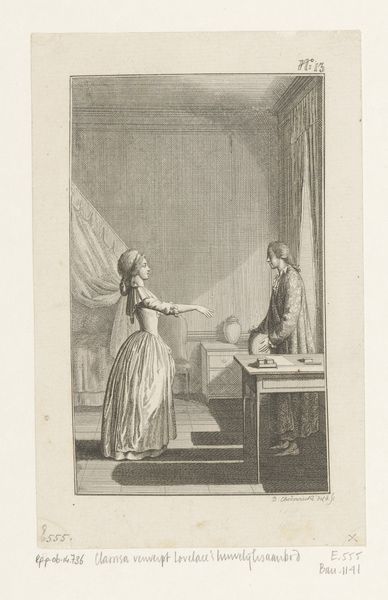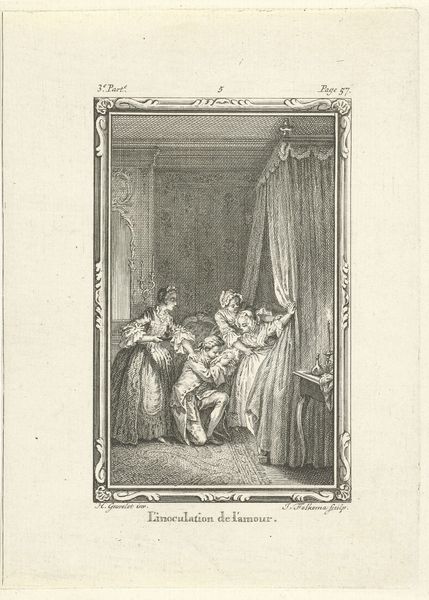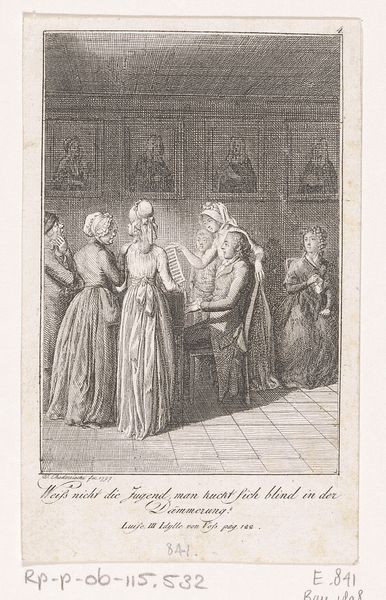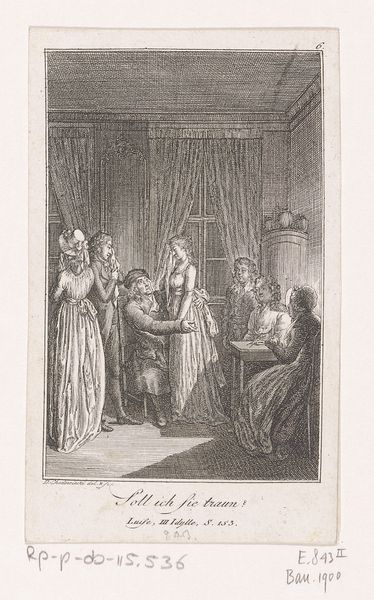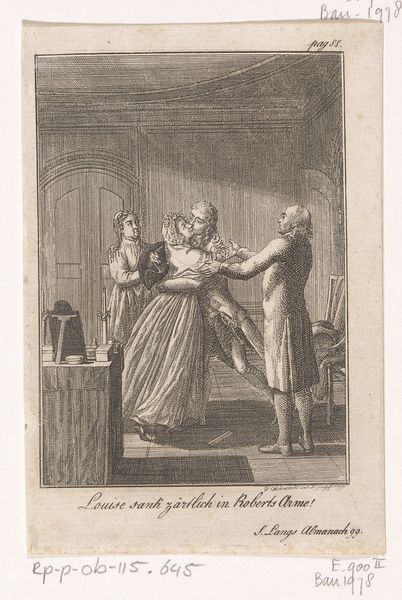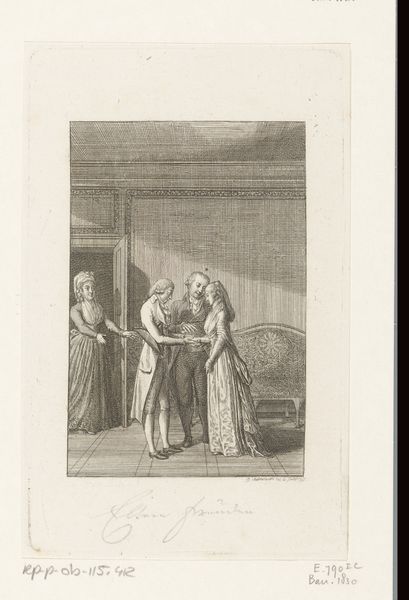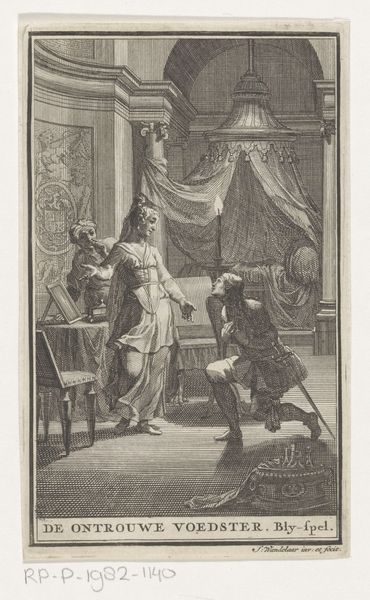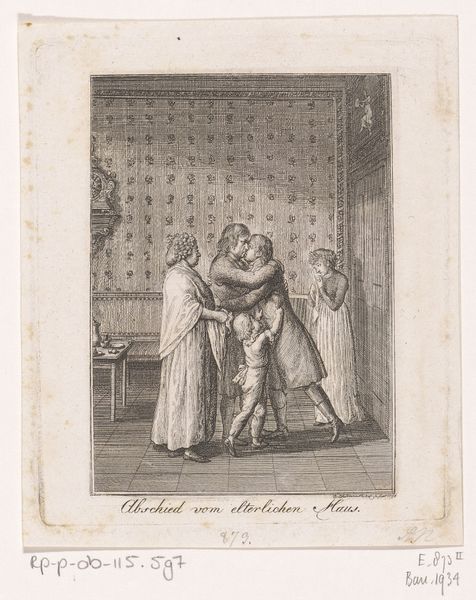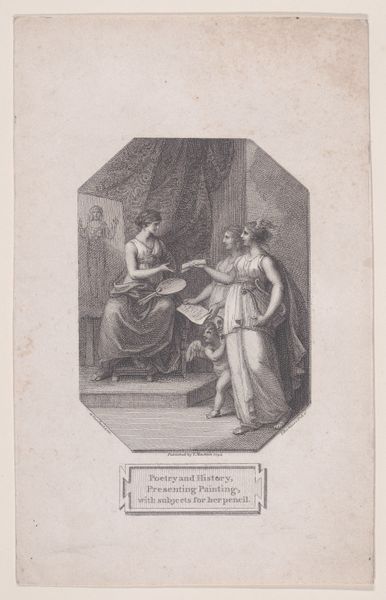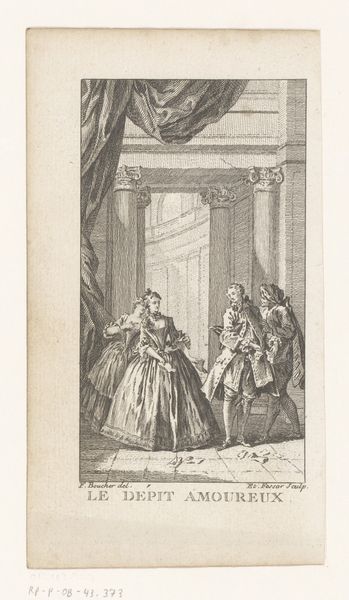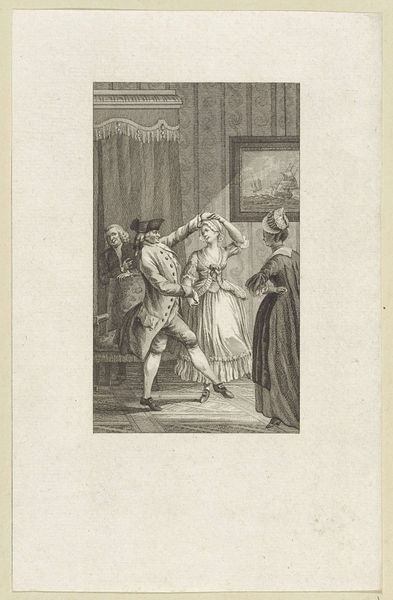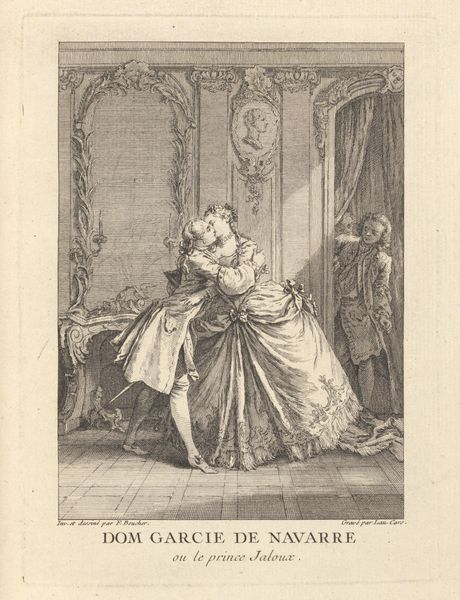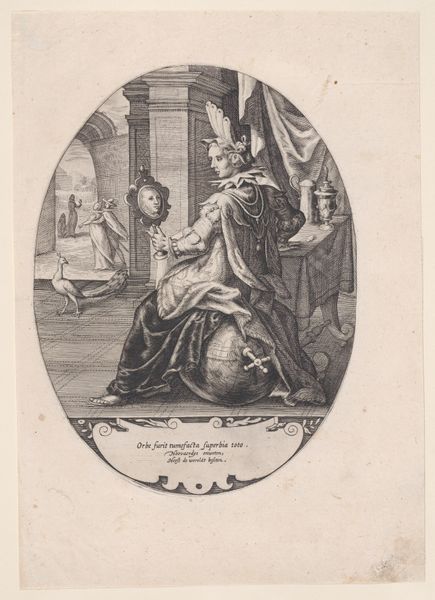
print, engraving
#
portrait
# print
#
pencil sketch
#
old engraving style
#
figuration
#
romanticism
#
genre-painting
#
history-painting
#
engraving
Dimensions: height 109 mm, width 66 mm
Copyright: Rijks Museum: Open Domain
Editor: This is "Walter sees Luise in her wedding dress" by Daniel Nikolaus Chodowiecki, created in 1797. It’s an engraving, a type of print. It's rather intimate; the couple seems to be embracing while a third figure looks on. What’s your take on this piece? Curator: Well, let’s think about the *making* of this engraving. The lines are deliberate, precise. What kind of labor do you think was involved in producing an image like this? Consider the time it took to meticulously carve those lines into a metal plate, the skill required for consistent pressure, the potential for errors... Editor: It must have taken considerable time and skill. It wasn’t as simple as, say, sketching something quickly with charcoal. There’s a permanence to it. Curator: Exactly. Now, let's think about the function of this image. It would be printed and distributed, right? Who would have had access to prints like this, and what does that tell us about the market and the consumers for such imagery? Editor: Maybe middle-class families? Perhaps this was a relatively affordable way to acquire art and decorate their homes with sentimental scenes? Curator: Precisely. This engraving isn’t a unique artwork displayed in a palace. It speaks to a broader availability of images. So we also might want to examine the depiction of marriage, the ideal of domesticity represented, and how those ideas are being circulated and consumed via this specific, reproducible medium. Does it challenge the established hierarchy of painting as "high art”? Editor: I hadn’t thought about it that way before. Considering the process and the audience gives me a much clearer idea about the art itself. Curator: Right. It forces us to acknowledge the artwork's ties to production, circulation, and the economic realities of art making and consumption in the late 18th century. We shouldn't ignore that.
Comments
No comments
Be the first to comment and join the conversation on the ultimate creative platform.
